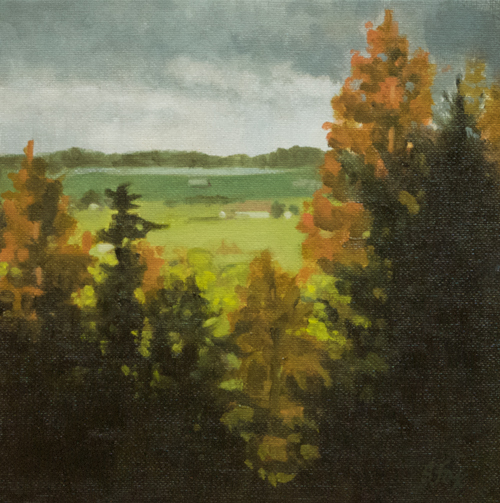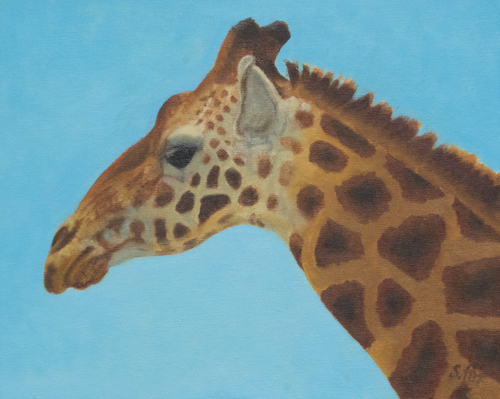Over time, I think most painters end up with preferences for size, ranging from true miniatures that may only be an inch by an inch to, well, big, really big. Like ten feet high.
I’ve tended to stay in a middle range, which happens to be what has NOT been selling during the recession. But before the meltdown, I had decided to start doing art festivals and I needed a large body of work. Most of the paintings are 12×16″ to 18×24″.
Then I joined the Lost Coast Daily Painters and found myself needing to have a small (5×7″ to 8×10″) painting to post every week. It was hard at first to work that small, but I got used to it and started to see some definite advantages:
One, they are more affordable for people.
Two, many buyers and collectors don’t have room anymore for work that is much bigger and it encourages them to take a chance on a new artist. That would be me.
Three, small works seem to be considered appropriate for gift-giving, so that expands the market a little.
Four, for me as an artist, I’ve found that it’s a good way to study various painting problems, like capturing light effects, without investing time and materials in a larger piece that might not pan out.
Five, they force me to focus on one idea and to keep it simple.
Here are three recent small works:

I wanted to capture the light effect of dark clouds and sunny areas. Working in a square format was fun, too.

I’ve struggled with how to paint this kind of light effect- foreground shade and background sun. It’s a push and pull process. I think this works pretty well.

Once again, I’m studying how to do a light effect- the high key shadows and reflected light on the head of the giraffe. I also ended up with a postive/negative shape relationship that I like. The color of the giraffe and the sky form a complementary color relationship, too.
What has evolved over the past year is an interesting split that is working well for me. I’m doing a lot of smaller pieces like the ones above (I plan to have 30 or so available at the Marin Art Festival). And then I’m painting larger, major pieces that can require a lot of preliminary work. With luck, you’ll see the latest one next week.


 This is the mouth and muzzle of a Coke’s hartebeest, a large antelope, which I saw in the Masai Mara, Kenya. It has a very long head. When I enlarged the image to see the mouth better, I was struck by how its shape and the shape of the nose flowed together in an almost art nouveau manner. Just the kind of thing I look for.
This is the mouth and muzzle of a Coke’s hartebeest, a large antelope, which I saw in the Masai Mara, Kenya. It has a very long head. When I enlarged the image to see the mouth better, I was struck by how its shape and the shape of the nose flowed together in an almost art nouveau manner. Just the kind of thing I look for. Also from the Mara, this is the mouth of a spotted hyena. Their jaws are trememdously strong and can break large bones apart. And, as you can see, are filled with teeth. Studies have proved that they hunt at least as much as they scavenge. They live in female-centric “clans” in a defined territory that they defend against anything, even lions. I really enjoyed watching them and hearing them “whoop” at night.
Also from the Mara, this is the mouth of a spotted hyena. Their jaws are trememdously strong and can break large bones apart. And, as you can see, are filled with teeth. Studies have proved that they hunt at least as much as they scavenge. They live in female-centric “clans” in a defined territory that they defend against anything, even lions. I really enjoyed watching them and hearing them “whoop” at night. This is the muzzle of a young lion I saw in the Mara. No scars yet and it has an almost soft quality that will change as he gets older.
This is the muzzle of a young lion I saw in the Mara. No scars yet and it has an almost soft quality that will change as he gets older.